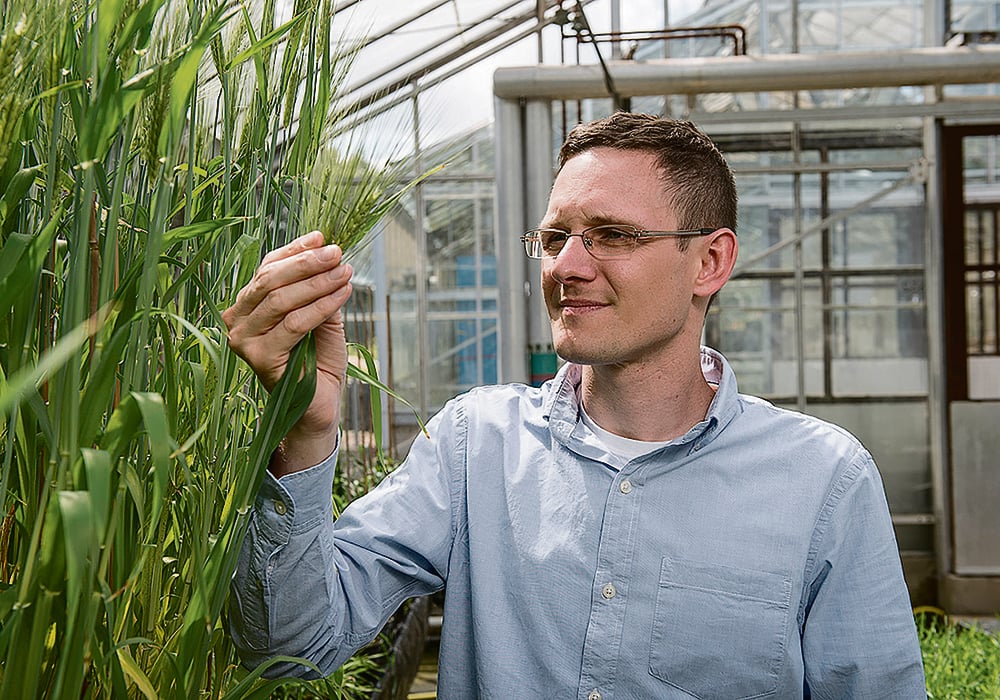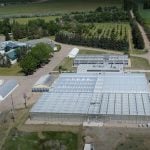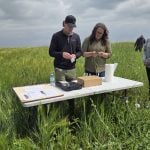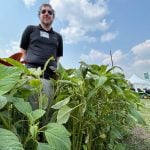British scientists hope to learn from nature as they explore why pathogens affect some plant species but not others
Why do pathogens cause devastating disease in some plants but not others? How is it that the pathogen Phytophthora infestens — the cause of the Irish potato famine — can be so destructive on potatoes but has no effect on other fruits and vegetables? If resistance is so effective, can it be transferred to other susceptible crops?
Understanding why some crops become infected by a certain pathogen while others do not and why a plant is susceptible to one pathogen but can resist another closely related infectious agent has been the focus of studies for years.
Read Also

Key actions identified to address canola tariffs
Federal and Saskatchewan governments discuss next steps with industry on Chinese tariffs
Ongoing research at the Sainsbury Laboratory in Norwich, United Kingdom, is uncovering some of the mechanisms behind resistance, which is hoped to lead to improved resistance against a wider spectrum of pathogens for a variety of crops.
“The field of nonhost resistance sets out to identify novel ways to engineer resistance to these plant pathogens guided by approaches that already exist in nature,” said Dr. Matthew Moscou, scientist and group leader.
“This question is fundamental to understanding why some plants get infected by a particular pathogen and others don’t, and why a given pathogen can only successfully colonize a limited number of plant species which form its host range.”
Nonhost resistance is considered by scientists to be the ability of a plant species to deflect all attempts by a pathogen species to colonize it and reproduce on it. Given the durability of a plant’s immune system to resist a pathogen’s invasion, the molecular basis for this resistance has potential for agriculture. But many aspects of the plant’s immunity remain unclear.
“Every plant has its pathogens,” said Moscou. “A good example in Canada is wheat rust and there’s barley that has leaf rust. The two are rust pathogens but, as a species, they are quite different from each other and there is a huge array of rust pathogens. Even though they are related, they are quite different and have different ways of getting into the plant.”
This relationship between a plant and a pathogen comes down to the plant’s ability to recognize a pathogen and a pathogen’s ability to suppress the immune system, infect the plant and access its nutrients.
A challenge for many scientists is understanding to what extent does each component of either the plant’s immune system or the pathogen’s effectors (proteins it secretes to affect the immune process) affect the other. The pathogen secretes compounds such as proteins or metabolites, which are used to compromise the plant by turning off its immune system.
“It’s pretty amazing,” Moscou said. “We often make analogies to warfare. The plants are using chemical warfare where they are trying to damage the pathogen by breaking a cell wall and the pathogen is doing the same using molecular tricks. There are some examples where they even trick the plant into killing itself. But there are good pathogens, like root fungi, that not only take from the plant but give back too.”
Moscou sees the ultimate goal is to discover long-term sustainable approaches.
He said the goal is to transfer very high levels of disease resistance in non-host plants and put them into crops. He said it is difficult because of how diverse the plant pathogens are and the fact that each pathogen may use a different suite of approaches to infect a plant at the molecular level.
In addition, the plant immune system is highly specialized.
“We still do not have a silver bullet for each interaction. You have to specialize your strategy for each one.”
He said short-term solutions can ultimately break down, not unlike antibiotic resistance in microbes.
“We are now actually identifying a strategy where we create the bar so high that the adaptive evolution of the pathogen cannot overcome it. That’s the main target.”
The review, one of 10 reviews exploring the top 10 unanswered questions in molecular plant-microbe interactions, was published in the MPMI Journal.

















